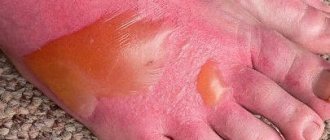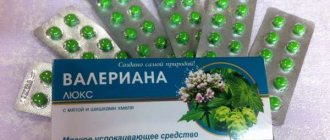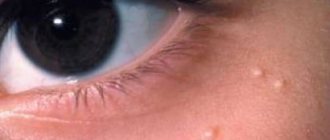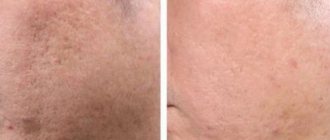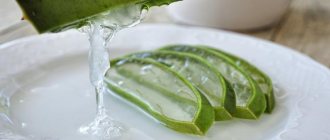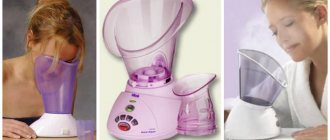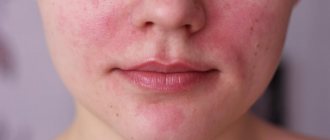After receiving a thermal injury, many people wonder how quickly and how the burn heals. The time it takes to completely restore the skin varies individually. It depends on factors such as age, degree and area of damage, the nature of the traumatic agent, and the health status of the victim. Thermal injuries are the most difficult to treat and lead to irreversible complications in children, elderly and debilitated patients. A child can die even with a small area of damage.
The burn heals in several stages . Their sequence is determined by the degree of thermal injury, the presence of purulent complications in the wound, and the nature of the traumatic agent.
Burn degrees
In total, there are 4 degrees of burns, which differ in the depth of damage:
- The first is characterized by the appearance of swelling, redness, and an increase in local temperature in the burned area.
- In the second, blisters of different sizes appear on the skin, which tend to merge and enlarge. The contents of the bullae are serous. The bottom of the wound is represented by the superficial layer of skin.
- The third degree is divided into 3A and 3B. At 3A, the bullae contain a jelly-like mass, the bottom of the wound is viable. With this damage, the skin can recover on its own. At grade 3B, the blisters contain hemorrhagic fluid, and a dark-colored scab may form on the surface of the wound. At this depth of burn, the germinal layer of the epidermis is damaged and the wound will not be able to heal on its own.
- The fourth degree is accompanied by damage not only to the skin, but also to deep-lying muscles, tendons, ligaments, and bones. A dense black scab forms at the site of the burn wound. Recovery takes a long period of time with the formation of rough scars.
Types of burns
The speed and sequence of recovery stages depends on the type of traumatic impact.
Depending on this, burns are divided into the following types:
Solar and thermal burns from exposure to boiling water are usually superficial; heal quite quickly. Chemical injuries often occur as a result of contact with poisons from animals (jellyfish), plants (hogweed, nettle), and household products. With short-term exposure they are superficial, recovery occurs quickly.
Healing of thermal burns from hot objects (heated iron, radiator, heater) will depend on the duration of contact and the area of damage. Short-term exposure does not cause serious consequences, and the burn goes away fairly quickly. Prolonged contact may result in fourth degree thermal injury.
The most dangerous injuries are from exposure to open flames. Most often these are 3B and 4 degree burns.
Without the help of qualified specialists, recovery will not occur on your own. Healing occurs after surgical treatment.
Electric shock
Electrical burns occur from contact with exposed wires, faulty electrical appliances, or being struck by lightning.
Damage often affects the deeper layers of the skin and causes injury to internal organs. When interacting with voltages up to 380 V, 1st or 2nd degree burns are formed. If the current strength is higher, there is a threat of damage of 3 and 4 degrees. A powerful electrical discharge can cause charring of the epidermis, leading to myocardial infarction and death.
Clinical picture
A characteristic sign of an electrical burn is tissue swelling. The mark from contact with the current is clearly visible on the patient's face . The surface of the skin dries and becomes grayish-white. Strong exposure causes necrosis and detachment of the epithelium.
The recovery process occurs gradually. Proper treatment stimulates cell regeneration, restores the sensitivity of nerve endings and the elasticity of the epidermis.
First aid and treatment
During an electric shock, it is necessary to stop the victim’s contact with the current as quickly as possible. You need to disconnect the device from the power source or push the person away with a wooden stick.
- The patient should be placed on his right side and given cool water to drink.
- If he loses consciousness, perform artificial respiration and cardiac massage.
- Place a sterile cloth on the burned area.
With a severe electrical burn, a state of shock is often observed. The person does not feel pain and says that he is fine. This is a deceptive reaction, so you need to urgently call an ambulance. While she is driving, the victim needs medications to support the heart, for example, Corvalol, motherwort tincture, Validol.
Once first aid has been provided, burns should be treated according to the standard regimen required for thermal injuries.
Effect of burn area
The area of the lesion plays a significant role in wound healing. The larger the wound surface, the higher the risk of developing burn disease . With it, in addition to local manifestations on the skin, there is a lack of organ function and disruption of the heart. Recovery is longer, more difficult, and in some cases the injury is fatal.
The affected area is measured in several ways. One method is to use the palm of the victim himself. In adults, one palm corresponds to 1% of the body area. Special tables are used for children, which are also suitable for adults depending on age.
How does healing occur?
First degree burns heal fairly quickly. It may take 1 to 3 days. Redness and swelling subside. Peeling and pigmentation appear at the site of the burn wound, which after a while disappears on its own without a trace .
2nd degree burns can heal from 2 to 3 weeks, for small areas and without complications - up to 1 week. Under the bubble, if there is no opening, young pink skin can form on its own. If the blister bursts, an infection may occur, then it will take more time.
With 3A degree burns at the initial stage, a dark-colored scab or blister with hemorrhagic contents often forms on the skin. After some time (2-4 weeks), the scab peels off and the bubble bursts, exposing the underlying layers of the epidermis. Islands of young skin appear in these areas, which gradually cover the entire wound. Full recovery may take three weeks to two months.
3B and 4th degree burns do not heal on their own. In the initial stages, a dense black scab appears in the wound area. After its rejection, pink granulations begin to appear on the underlying tissues, if suppuration has not occurred. This healing stage will require a very long period, which can reach several months .
After the appearance of juicy granulations, a person’s own skin can be transplanted. At the next stage, either its engraftment or rejection is possible. In the latter case, repeat surgery will be required. After recovery, rough scars form on the skin, disfiguring scars.
Severe thermal injuries in the joint area are very difficult and take a long time to heal. After all stages of recovery, contractures develop in them, limiting the mobility of the limbs.
When an infection occurs, healing at any stage slows down. Therefore, treatment is carried out in specialized medical institutions with the use of antibacterial drugs.
How long does it take for burns to heal under different conditions?
The degree of burn is the depth of tissue damage. Tissue proteins can withstand heating up to +45 C, after which they coagulate or fold. At the same time, red blood cells are destroyed, and blood plasma also leaves the vascular bed. The stronger the heating, the greater the destruction caused to the tissues of a living organism.
To accurately determine how long a burn will take to heal, you need to know the following factors:
- degree;
- source of burn;
- damage area;
- age of the victim;
- general condition of the body.
All of these factors have different effects on the rate of healing.
According to the degree of heating, experts distinguish 4 degrees of burn:
- I – redness, swelling of the skin;
- II – bubbles with clear liquid;
- III – tissue necrosis, scab formation;
- IV – charring of the skin and deep tissues.
Burns require different periods of time to heal on their own. Treatment of wounds caused by burns plays an important role in the duration of healing.
First-degree burns heal quickly - after 2-3 days, redness and swelling disappear, after which the burned area begins to peel off and a pigment spot appears in its place, which disappears without a trace after a few months.
A 2nd degree burn takes varying amounts of time to heal; it depends on whether the bubble bursts. If the bubble is small and resolves on its own, then new skin grows under the burned layer, and after a few weeks the crust peels off and in its place you can see a pink spot. It takes 3 weeks for normal healthy skin to appear in this area .
If the blister opens on its own and an infection gets into the wound, the body first needs to cope with it, and then grow new layers of skin. This may take up to two months.
For a 3rd degree burn, the healing process begins within a month. In the first few weeks after injury, tissue destruction continues, inflammation and reactive edema appear, during which dead tissue is rejected. Only a month after receiving a burn, healthy tissue appears on the damaged area - islands of cells from which the growth of healthy skin begins.
With such burns, the human body needs intensive care: it is necessary to suppress the infection, remove dead areas, and transplant islands of healthy skin.
The body will not be able to cope on its own without qualified medical care.
It is difficult to name the exact healing period for such a burn, and it does not go away without leaving a trace, leaving rough scars. If the scar is on a moving part of the body - on the bends of the arms and legs, on the face and neck, in the armpit area - these scars require further plastic surgery.
The most severe burns are fourth degree burns. If the victim survives, he becomes disabled - however, new treatment methods such as artificial skin bandages or spraying stem cells onto the damaged area return similar patients to a full life.
The speed and result of healing largely depends on the area of the burn . The easiest way to determine it is by using your palm - the area of the palm is approximately 1% of the body area, this applies to adults, in children it is determined using special tables.
The area of damage is inversely proportional to the likelihood of complete recovery.
The cause of the burn - fire, steam, electricity or chemical - is also taken into account. The mildest wounds are caused by unpressurized steam, while the most severe are caused by ionizing radiation and open flame.
A lot depends on what kind of assistance was provided to the victim.
- remove the source of damage;
- rinse with cold running water for 20-30 minutes;
- Give simple painkillers and fluids.
What you should never do:
- Lubricate with sour cream or oil for burns. Ointment for children is more gentle in its composition;
- tear off stuck-on parts of clothing from the damaged area.
The sooner the victim receives medical help, the greater his chances of maintaining health.
source
How long does it take for burns of varying degrees to heal?
First degree burns can take up to 20 days to heal. Healing time depends on the damaged area. Wounds from burns on the face, hands, feet and groin area take longer to heal. During healing, the skin may peel off from the damaged area of skin.
Medicine prescribed by a doctor will help speed up the healing of wounds from first-degree burns.
Wounds from second-degree burns take longer to heal, usually 10 days to three weeks, as long as the injured person receives the necessary medical care. If the wound is infected, it will take longer to heal.
Second-degree burns can occur when the skin is damaged by corrosive agents found in some chemical cleaning products. Such a burn will take 2.5 weeks to heal. In this case, blisters will appear on the skin and the wound will become wet. In some cases, scarring may occur.
A second-degree sunburn also takes about two weeks to heal. It is important not to cause an infection with the help of a cream, which cannot be used for a second-degree burn. The healing process of a wound can be speeded up by using a disinfectant and eating healthy foods, which will help the tissues heal faster.
Electrical burns may not damage the skin, but they can cause damage to internal organs.
The healing time of a burn wound is also affected by the depth and area of damage. However, after the wounds heal, the skin will remain sensitive to sunlight. Nutritional supplements help heal such a burn: zinc and vitamins C and E. The healing process will speed up the contact of damaged skin with air; you must also follow the doctor’s recommendations.
The healing time for a wound from a third degree burn ranges from 6 weeks to a year. It depends on how healthy the victim is and how severe the burn is. The wound from such a burn heals only at the edges, and in this case a skin graft is performed. A thin layer of epidermis is removed from healthy areas of the body and transplanted to damaged areas.
In this article we will look at how long it takes for 2nd degree burns to heal.
A burn is damage to soft tissue that occurs due to the action of high temperature and chemical elements. Burn wounds occur in varying degrees of severity; they are characterized by depth and, in addition, by the area affected. The duration of the recovery process, methods and methods of therapy depend on the severity of the wounds received and the reason that caused them. In total, medicine distinguishes four stages of burns, each of which is characterized by the depth of tissue damage.
The mildest are 1st and 2nd degree burns, which, with minimal human attention, can go away within three days without leaving any traces. Severe forms include the third and fourth; for such injuries, therapy is carried out exclusively within the hospital, which will require a long recovery period. This article is dedicated to second-degree burns, which are the most common and can be obtained at home.
So, let’s figure out how long it takes for 2nd degree burns to heal.
What to do and how to treat a burn on the face: tips and recommendations
A facial burn is damage to the skin caused by radiation, electrical or chemical irritants. Facial muscles are the most mobile, their damage is accompanied by severe pain and discomfort during healing. Various cosmetics and procedures can also cause chemical burns to the face and neck.
Inflammation, red skin, itching, blisters are a clear sign of grade 1-2 damage. If there are no blisters, the burn has the same symptoms as an allergic reaction to cosmetics.
A cosmetic mask based on unknown ingredients may cause chemical damage and may cause your entire face to swell.
According to the International Classification of Diseases, 10th revision (ICD-10), burns codes from T20 to T32 are divided into four types, each type is determined by four degrees of damage.
- Chemical – damage by chemically active substances. Aggressive reagents have a destructive effect on body tissues, penetrating deeply into them.
- Thermal - occurs when in contact with a medium or object whose temperature exceeds 45 degrees Celsius (at this limit the protein begins to coagulate). The depth of penetration of thermal shock depends on the duration of exposure. A burn during laser hair removal is of this type.
- Radiation is a common injury for sunbathers in the summer, during cosmetic procedures, using ultraviolet radiation and solariums. You can get burned if you handle a quartz lamp carelessly. It is characterized by extensive damage to the upper layers of the skin, severe pain, and a depressed state of the body.
- Electrical – Careless handling of wiring and electrical equipment can result in injury. This happens less often during welding than at home.
After the defeat, a trace remains in the form of a speck around a deep wound, at the point of entry of the electric arc. The area of skin loses sensitivity and will not hurt at first.
- First degree – redness, inflammation, burning, pain.
- Second degree - watery blisters are added to the symptoms of the first degree. The body takes longer to restore the skin. Depending on the size of the burn, a decision is made to go to the hospital. The affected area is the size of a child's palm and requires medical attention.
- Third degree - deep tissues are affected, a scab forms on top of the wound.
- Fourth degree - all layers of skin are damaged, right down to the bones.
Each type has its own characteristics of first aid. By following them, you can reduce the level of damage and speed up the healing process.
Due to the differences in chemicals, their effect on the body and reaction to the liquid, the offending element should be removed with caution. It is advisable to use neutralizing agents. For acid - soap solution or salt water, alkali is quenched with slightly diluted vinegar essence or citric acid. The powdered reagent (bodyaga powder) is removed before washing.
After cleaning the affected area, keep the affected area under running cold water for a long time.
A minor burn can be treated using a home first aid kit and folk remedies. It is not recommended to apply greasy cream or sunflower oil to the wound, as they impede the access of oxygen to the skin.
Note:
- Some substances react strongly with water.
- If pepper gas gets into your eyes, rinse with soap and water until the irritant is completely removed.
- The specific effect of hogweed juice is associated with ultraviolet radiation; when providing first aid, the victim should be protected from direct sunlight.
- When celandine juice gets on sensitive skin, it causes a burn.
- An overdose of badyagi powder when treating skin diseases can cause damage - read the instructions carefully.
- Use caution when treating facial wounds with hydrogen peroxide. Once on the mucous membrane, it will cause injury to the cornea of the eye.
- If you get a burn on your body or face from the cream, show the tube or instructions to your doctor to determine the component that caused the injury.
After breaking contact with the source of a thermal burn, immediately cool the injury site. Boiling water, steam, fire, and hot objects transfer temperature to tissues. Having stopped the effect, it goes deeper inside, destroying the cells. Water will ease inflammation and relieve pain.
Keep the wound under running water for about twenty minutes, then treat with healing, painkillers.
Medications must be applied to a thermal burn of the face carefully. The proximity of the organs of vision and respiratory tract limits the use of sprays. Gently treat the area around the eyes with creams and ointments.
At the first sign of a radiation burn, you should hide from the sun. The victim's temperature rises, dehydration begins, and severe pain appears. First aid is treating the skin with healing, soothing agents, taking painkillers and drinking plenty of water.
Burnt skin will peel off over time, leaving light spots.
During an electric shock, it is necessary to break the contact of the victim with the voltage source. The victim is laid on the floor; if he is unconscious, a diagnosis of heartbeat and breathing is carried out. A cushion is placed under the neck to ensure that the head is positioned higher than the body. Artificial respiration and indirect cardiac massage are performed.
After emergency measures, the wound is treated with running water and healing agents.
Rules of conduct in case of facial burns:
- quickly stop contact with the damaging element;
- It is forbidden to remove the formed bubbles; they will be removed by a doctor;
- healing skin will itch and itch - do not give in to temptation;
- Do not apply cosmetics or depilatory creams to the wound.
Damage to the skin of the face causes aesthetic discomfort and can impede necessary physiological processes: swallowing, breathing, opening and closing eyelids, and others. It is important to know how you can reduce lesions on your face.
Pharmacies provide a wide range of wound healing and disinfectants to help treat burns on the face:
- Antiseptics prevent bacteria from entering the wound, forming suppuration and increasing its area.
- Furagin.
- Furacilin.
- Decamethoxin.
- Alcohol solution of salicylic acid.
- Antibiotics help fight inflammation and infection that has entered the affected tissue.
- Erythromycin;
- Levomycetin;
- Healing remedies are used to heal the burn site itself.
- Furacilin ointment;
- Dermazin;
- sea buckthorn oil;
- balm Zvezdochka.
Surgical intervention is required for burns of 2,3 and 4 degrees, to maintain the elasticity of the skin, mobility of facial muscles, and reduce scars. Dead epidermis is removed and blisters are drained.
- Excision is used when a large scab forms, to clean the wound, and to remove dense granules formed in the skin. The edges are trimmed with a scalpel, which promotes healing in a given direction and reduces bumpy formations.
- Plastic surgery is used to restore nasal cartilage and prevent tissue death. Surgeries are required for 3rd degree burns, there is a risk of wound spread and it makes it possible to remove the consequences after healing.
Protect the burned forehead from contact with hair. They carry pollution and irritate sore skin. Sterile wound conditions are recommended.
Apply the products in a thin layer.
Alcohol-based products dry out the skin, causing irritation. Iodine can cause an even worse burn. Do not use them yourself.
Kombucha tincture accelerates skin regeneration at the site of damage. A compress soaked in tincture will speed up recovery.
The initial stage of the burn does not leave scars and goes away within a few days. The only consequence is a thin layer of dead tissue that will come off on its own. You can be treated at home.
Therapy under medical supervision will help cure 2nd degree burns without scars. It is forbidden to get rid of blisters on your own - protection for a healing wound. Their elimination will serve to form scars. The wound should be treated in stages. First, inflammation and infection are relieved, and after the blisters disappear, the scar heals.
3rd and 4th degree burns may require skin grafting. Tissues are taken from the patient or a suitable donor. This helps restore the epidermal layer.
Do not experiment with questionable cosmetics, protect yourself from the sun. Exactly following the instructions will help you get rid of a burn on your face without consequences.
A facial burn is a rather serious injury, because it is difficult to hide, it brings not only pain and discomfort, but also aesthetic problems. If the injury has a large area and depth, scars may remain for life, so it is important to know what to apply to a burn on the face when providing first aid and what products are needed for further therapy.
The first sign of injury is the appearance of redness, itching and blisters, depending on the cause of the injury, other symptoms may be added:
- A chemical burn to the face occurs as a result of contact with toxic active substances, aggressive reagents that destroy tissue (penetrate deep into the epidermis).
- Radiation damage to tissues occurs due to excessive contact with UV rays or improper use of a quartz lamp. The lesion is characterized by a shallow depth of spread, severe pain and a depressed state of the body.
- A thermal burn of the face is formed due to contact with objects or an environment whose temperature is above 45 degrees. Based on the time of exposure, the depth of destruction of healthy tissue differs.
- An electrical burn to the face is a consequence of careless handling of electrical appliances and equipment.
Emergency measures must be carried out according to certain rules so that first aid for a facial burn brings maximum effect:
- Immediately stop contact with the irritant;
- If the skin remains intact, direct a stream of cool water onto the injury to reduce redness and inflammation. You can use a compress of ice wrapped in a clean, soft cloth. The procedure takes 10-15 minutes;
Important! If there is a chemical burn on the face, do not rush to rinse the area with water; some reagents react strongly with water.
- Do not remove stuck clothing or jewelry from the affected area yourself. This should only be performed by professional doctors;
- If a burn occurs on the face, standard analgesic drugs - Paracetamol, Analgin - will be effective. For extensive damage and severe pain, more effective painkillers are needed, for example, Promedol, Ketanol;
- For grade 3.4 lesions, pre-medical care should be carried out only by specialists; it mainly consists of infusion therapy - drip administration of medications;
- What to apply to a burn on the face in case of blisters or open wounds? Antiseptics should be used, for example “Chlorhexidine”, “Miramistin”, “Furacilin”, and use them to disinfect the burned area.
- Apply a specialized preparation to the site of the facial burn that will help eliminate painful symptoms and accelerate tissue restoration: Panthenol, Bepanten Plus, Olazol, Levomekol.
- When transporting the patient to the medical center, independently conduct a preliminary examination for additional damage and injuries.
Do not forget that the lack of reaction of the victim may indicate a state of shock.
Main characteristics
Based on generally accepted medical concepts, a burn is a violation of the integrity of the skin or mucous membranes, which occurs as a result of unnatural contact with high temperature or certain chemical components.
A second-degree burn is characterized by damage not just to the top layer of skin (epidermis), but also to the dermis. This may lead to a violation of capillary permeability. In addition, nerve endings are also affected. Visually, 1st and 2nd degree burns can be identified by the following symptoms:
- The contact area becomes red and inflamed.
- There is pain that increases with touch. The burning pain can last about three days.
- The appearance of swelling with a 2nd degree burn and blisters with liquid internal contents.
Causes of second degree burns and their types
The main criterion for establishing the type of burn is the type of source, the unnatural effect of which on the skin provokes its damage. As a rule, the skin suffers from contact with high temperatures from fire, due to interaction with heated objects, liquids, steam, as well as from the aggressive action of chemical components or radiation on the tissue. The following types are distinguished:
- Getting a thermal burn.
- Chemical burn.
- Radiation damage, although second degree of this type is rare and only occurs in people with fair skin.
- Electrical type, resulting from exposure to lightning or current. Such physical phenomena during contact with the body form the entry point for the discharge and its subsequent exit. It is in these places that the burn appears.
Alkaline burns
With such lesions, a wet wound with a whitish coating at the bottom is formed. Damage to the epidermis occurs due to hydroxyl radicals. Collagen destruction occurs and the dermis swells. Deep foci of wet necrosis form.
Salts of heavy metals upon contact with the skin cause burning and redness, and then toxic dermatitis. This often results in infection.
Burns from gasoline and damage to the skin upon contact with it occur infrequently. But flammable liquids (gasoline, kerosene, diesel fuel) cause serious consequences.
Important! If gasoline gets on the skin and mucous membranes, it must be removed with a napkin, then thoroughly wash the contaminated areas of the skin with cool water and soap, otherwise inflammation and ulcers may occur.
Bleach burns occur only when your hands are hypersensitive. A single hit will usually not cause any consequences. In case of irritation, you should treat the surface with water and do not rub - before and after, otherwise the burn will be deep and scars will remain. After washing, apply a bandage with Levomekol ointment.
The detergent burn depends on its class - alkaline or acidic. It is important to carefully study the instructions and composition before use. All products contain surfactants (surfactants), so there may be burns. The insidiousness of detergents lies in their absorption into the skin. If the rules for working with detergents containing acids are violated, if they enter the respiratory tract they will cause not only a chemical burn, but also laryngospasm, which can lead to pulmonary edema. When the nervous system is damaged, seizures and psychosis occur.
Conducting visual and medical diagnostics
The first minutes after injury, the condition of the damaged surfaces can suggest the severity of the injury. The first thing doctors pay attention to is blisters. Their presence indicates the presence of the second degree. If the burn is extensive, then to diagnose it you should contact a medical institution, where a combustiologist, based on the clinical picture (area of damage, presence of swelling and pain), will determine the degree. In addition, if there are open blisters, the doctor will be able to prevent the development of infection.
The situation is more complicated with internal burns. To determine how damaged the respiratory organs or esophagus are, an x-ray is required along with a detailed blood and urine test. And then, based on the results, they draw a conclusion about the nature of the burn to the internal organs and prescribe appropriate therapy.
What help is needed for 2nd degree burns?
First aid
If you get a chemical burn on your face from the cream, what should you do? In order to avoid negative consequences, you will need to take simple measures. It is advisable to find out in advance what to do in this case. After all, sometimes the use of the most harmless compounds can harm sensitive skin.
On the advice of dermatologists and cosmetologists, first aid should be carried out according to the following scheme:
- If any discomfort, burning or itching occurs, it is necessary to remove the composition applied to the face. To do this, just take a large amount of cool water. You will need to rinse your face for 15 minutes. This will relieve swelling and redness. The use of detergents is not recommended, as they can cause additional irritation and pain.
- Remove any remaining moisture from your face. The skin should be completely dry.
- In the event that the skin of the face is burned by a cream that contains acid, its harmful effects should be neutralized with a soda solution (25 g per 200 ml of water).
- If injuries caused by alkaline agents occur, you will need to treat your face with a mixture of citric acid (3-5 g) and water (200 ml).
- Apply special preparations to the affected areas. How to apply chemical burns on your face? To do this, it is recommended to use products whose effects promote tissue regeneration.
- To reduce pain, it is recommended to take painkillers such as Paracetamol, Citramon and Analgin.
In most cases, the actions described above are sufficient to prevent serious consequences. After all, it rarely reaches severe degrees of skin damage when applying cream. If discomfort or severe pain occurs, women immediately try to completely remove the product.
In the case when the drug, the use of which caused a burn, did not cause any particular harm to the dermis, you can cope with the consequences by using traditional medicine recipes that have a gentle effect.
How is first aid given?
It is important to understand that a lot depends on the qualified first aid provided. In this case, it is important to pay attention to the depth of the burn, and, in addition, to the level of pain and the duration of the recovery period, and, of course, to the absence or presence of a scar on the skin. Therefore, you need to clearly know what can be done after a 2nd degree burn, and what is strictly prohibited. And so, to provide first aid to a person suffering from second-degree burns, it is necessary to do the following:
- The burned surface must be immediately freed from clothing and the source of injury.
- The affected area of the body is immediately placed in cold water, preferably under running water, but the stream is not directed directly to the wound. If this is not possible, you can use a container of cold water for cooling. Thanks to cold, a decrease in skin temperature is achieved, which prevents deep damage. In addition, the pain effect is reduced due to the fact that blood vessels narrow under the influence of low temperature. The cold procedure as part of first aid should last at least twenty minutes, but can be longer - about an hour, that is, until the moment when the injured person begins to feel a slight numbness.
- The next step is to wash the wound with an alcohol-free antiseptic solution, for example, “Chlorhexidine” or “Furacilin” is suitable.
- Apply a sterile gauze bandage to the damaged skin.
- In case of severe pain, it is recommended to take painkillers in the form of tablets or injections.
In case of a second degree burn, it is prohibited to:
- To tear off the skin tissue from the wound, it must be carefully trimmed around the perimeter using scissors.
- Using brilliant green or iodine.
- The use of fat-containing components and natural products (in the form of butter, fat, sour cream).
- Self-opening of blisters can only be done by a doctor under special sterile conditions.
Folk remedies in the treatment of chemical burns on the face
There are several folk recipes that can be used to combat chemical burns. Aloe juice has bactericidal and nutritional properties, which copes well with inflammatory processes and heals affected areas of the skin. For therapeutic treatment of a burn, the juice of this plant should be applied to the wound surface twice a day for a week.
Vitamin E also promotes rapid healing of burns, since it contains a natural antioxidant. For greater effect, this vitamin is mixed with oil based on rose petals and the resulting mixture is applied to the affected areas twice a day.
Post-acne forms:
- Enlarged pores.
- Scarring.
- Redness.
- Vascular changes caused by impaired blood microcirculation.
The first three forms of post-acne are the most common; deformed vessels and capillaries are less common.
The pore expands due to excessive accumulation of sebum, dust, and keratinized scales of the epidermis.
- Vitamin A or retinol will help suppress the sebaceous glands. You can use it to make homemade masks; salons offer a more radical method - subcutaneous injections of the vitamin.
- Proper and regular removal of comedones, they are the ones who “fill” the pore and later deform it. To avoid problems, it is better to entrust your face to a specialist; he will select the most suitable option for facial cleansing - vacuum, mechanical, ultrasonic or combined.
- Peels with salicylic or fruit acid are aimed at removing the top layer of skin, the scales of which become clogged into the pores. This procedure should only be performed by a specialist; at home, you can aggravate the situation on your face with a burn.
It is impossible to get rid of a scar at home - masks and scrubs cannot completely rid the skin of this imperfection. Modern cosmetology offers radical methods of struggle:
- Laser resurfacing can bring visible changes in several sessions. The procedure triggers the active production of collagen, which heals scars.
- Microdermabrasion resurfacing smoothes the upper layers of the skin, resulting in the removal of imperfections on the face. The procedure is performed only in the salon.
- Chemical peels are aimed at active cell division, which fills the space formed at the site of the scar.
Redness at the site of inflammation may not go away for many months, but homemade masks can shorten this period by an order of magnitude.
- The main natural bleaches are lemon, St. John's wort, and parsley. Based on them, you need to prepare a mask, the base of which can be anything - cream, honey, egg white. Cosmetic clay is also effective in combating redness.
- It is important to regularly cleanse your facial skin with a scrub, this way regeneration will occur faster and the upper layers of the epidermis will be exfoliated.
A cold compress is very effective in treating minor rashes in the initial stages of their appearance. Water helps relax irritated skin and prevent blisters. To prepare a compress, soak a clean, soft cloth in cold water and wring it out. The rag should be damp, but not wet. Apply it to your face three times a day for about 30 minutes. Do this until all the rash disappears.
The cause of the appearance of a bunch of small rashes may be an allergy to some substance or object. If you notice that this is the case, stay away from the allergen (eg flowers, pets, certain foods, etc.). Also avoid contact with chemicals contained in this allergen, such as perfumes or detergents containing these substances. Comedogenic cosmetics can also cause acne to appear on different parts of the face, such as the cheeks. Once the rash disappears, make sure that this substance is indeed the cause of your illness, and try to avoid it in the future.
To get rid of the rash, you can use aloe-based cream. This is a natural product with anti-inflammatory and antibacterial properties. Rub it on your skin 2-3 times a day until the rash completely disappears. This cream is especially useful if the rash is caused by scratches, cuts, or other similar skin irritations.
Sunburn creams can also help get rid of facial rashes. This is facilitated by the presence of a substance called hydrocortisone in their composition. You can buy this cream in cosmetics stores or pharmacies without a doctor's prescription. If it does not contain instructions for use, apply it as needed. If treatment at home causes the rash to spread further or make you feel worse, contact your doctor immediately.
Another way to get rid of a rash on your face is to take antihistamines, such as diphenhydramine. The entire set of such drugs is available without a prescription and is used according to the instructions (usually one tablet every 5 to 6 hours). Antihistamines may cause increased drowsiness.
Therapy
How to treat 2nd degree burns at home?
Adequate treatment will significantly reduce the healing time of wounds. Today, the pharmaceutical industry has a wide range of anti-burn drugs with local and general effects. However, independent use of medications is not always justified. Since each of the drugs has its own contraindications and indications, it is therefore better to use those medications that are prescribed by a doctor.
When treating second-degree burns, antiseptic and anti-inflammatory medications are of great importance. Wounds are treated with antiseptics on the first day of injury. The most commonly used are Miramistin with Chlorhexidine. To relieve inflammation and prevent the development of purulent processes, ointments “Levomekol”, “Sintomycin”, “Furacilin”, “Gentamicin” and others are used. In addition, various ointments that contain panthenol are popular. They have a high moisturizing and healing effect.
A spray called “Panthenol” is especially popular among doctors and patients. It is very convenient to use, and has also proven itself to be an effective remedy in the treatment of burns. When treating burns, antihistamines are also prescribed. They can relieve swelling, eliminating skin itching. Most often it is recommended to take Suprastin or Claritin tablets.
If the pain is severe, you can take any painkillers, and if necessary, the doctor can prescribe injections. In order to enhance the processes of regeneration and collagen production, you need to drink vitamins. In addition, it is recommended to maintain a balanced diet. After all, the body needs strength to recover.
How long 2nd degree burns take to heal depends on whether the rules for their treatment are followed.
Tip 1: How to get rid of a chemical burn on your face
First of all, it should be noted that if a chemical burn occurs on the front part, it is imperative to consult a doctor for help. After all, some agents, in addition to burns, can cause general poisoning of the body directly with toxic substances. In addition, this injury is often accompanied by a state of shock, which is almost impossible to cope with on your own.
First, the chemicals are immediately removed from the face by rinsing with water, and then neutralized with specific preparations over a period of 15 minutes. For acids, as a rule, a two percent solution of baking soda is used, and alkaline substances are washed off with a weak solution of vinegar or citric acid.
Well-tested medications, such as Vishnevsky ointment, Contractubex gel, Panthenol, and Solcoseryl, help in the treatment of chemical burns. Also, alcohol-free forms of iodine and preparations containing silver, which has a wound-healing effect, are used as antiseptics. It is worth considering that this conservative treatment therapy requires patience and, of course, unquestioning compliance with all the doctor’s instructions.
How should blisters be treated?
With a second degree burn, the appearance of blisters is, unfortunately, inevitable. They must be handled very carefully. At the same time, it is important to try to carry out any manipulations in such a way as not to damage their integrity.
If the blisters are small, then if the burn is treated correctly with the help of special means, they will go away on their own. But it also happens that the blisters merge into one whole, forming large bubbles, inside of which a cloudy liquid collects. They must be opened, but only a doctor can do this correctly, observing special sterile conditions.
In cases where the blisters rupture on their own, the exposed surface must be treated with antiseptic solutions, and the membrane must be cut off with previously sterilized scissors. If for some reason an inflammatory process occurs in the burn wound and suppuration begins, then contacting a doctor should occur immediately. In such circumstances, additional treatment with antibiotics may be required.
During inflammatory processes, the victim’s temperature rises, chills and weakness appear. The danger of this condition is that if not acted on in a timely manner, the purulent process is very dangerous and can even lead to death.
2nd degree burn in a child
The principle of action in the presence of such a burn in children is identical to providing assistance to adults. The only difference is in the dosage and concentration of the drugs. In addition, there are psychological difficulties in providing first aid and subsequent treatment. Because children are emotionally sensitive, they react strongly to pain, and the presence of unsightly blisters can cause additional stress for them. Therefore, the behavior of parents should be careful, and at the same time correct. After first aid, the child is shown to a doctor who will prescribe the necessary medications. Self-medication for burns with boiling water of the 2nd degree, and even more so the use of traditional methods, is not recommended.
Stages of healing
Official medicine distinguishes three stages of 2nd degree thermal burns. The first is considered purulent-necrotic; against its background, the damaged tissue is rejected along with the formation of blisters. At this stage, regular antiseptic treatment of the wound and therapy with anti-inflammatory drugs are carried out. With proper treatment, this stage can smoothly transition to the second (granulation stage). It is characterized by the disappearance of blisters and inflammation. At this stage, patients experience tissue restoration, so the burn area continues to be treated with wound-healing ointments. The third stage involves the process of epithelialization. The burn heals with new skin. This stage is characterized by complete recovery.
It is important to understand that correctly selected medical products, and, in addition, timely treatment of a burn wound with antiseptic solutions, reduce the period of healing and restoration of the skin several times.
We looked at how a 2nd degree burn heals.
Methods of traditional therapy
How to cure a chemical burn on the face? If the lesion is minor, then a remedy based on honey will eliminate it. This bee product has many advantages, including eliminating pain, stimulating tissue repair processes and relieving inflammation.
The preparation of such a product should be carried out in stages:
- Warm honey (20 g) in a water bath. Exposure to heat should completely dissolve the sugar grains.
- Beat the yolk until white. After this, it is sent to already cooled honey.
- Add 20 ml of vegetable oil to the mixture.
The resulting composition should be applied to the face and left on its surface for 25 minutes. After this, the product is removed with a cotton pad slightly moistened with water. Next you should wash your face. For this procedure you need to prepare a chamomile decoction. It is recommended to use honey three times a day. The duration of such therapy is 7 days. As a rule, this time will be quite enough to eliminate the signs of the burn, as well as to initiate the process of active restoration of the affected dermis.
Another traditional medicine recipe includes ingredients such as 50 g of olive oil, boiled chicken egg yolk, and 40 g of natural wax. How is such a remedy prepared? Beeswax is added to the hot oil. An egg yolk, crushed in a blender, is placed into this mixture. The composition is heated over low heat for 5 minutes and cooled. Apply the mixture to the face 3-4 times during the day until obvious improvements occur.
Chamomile infusion is also quite effective. They need to gently wipe the burned area.
Cosmetologists recommend paying close attention to any burns, including those resulting from the use of a cream intended for skin care. If a lesion occurs, it should be treated with special medications that will eliminate pain and prevent inflammation.
How to get rid of a chemical burn on your face? Let's consider the most effective drugs that are used to restore the dermis.
